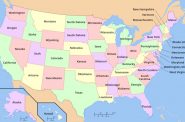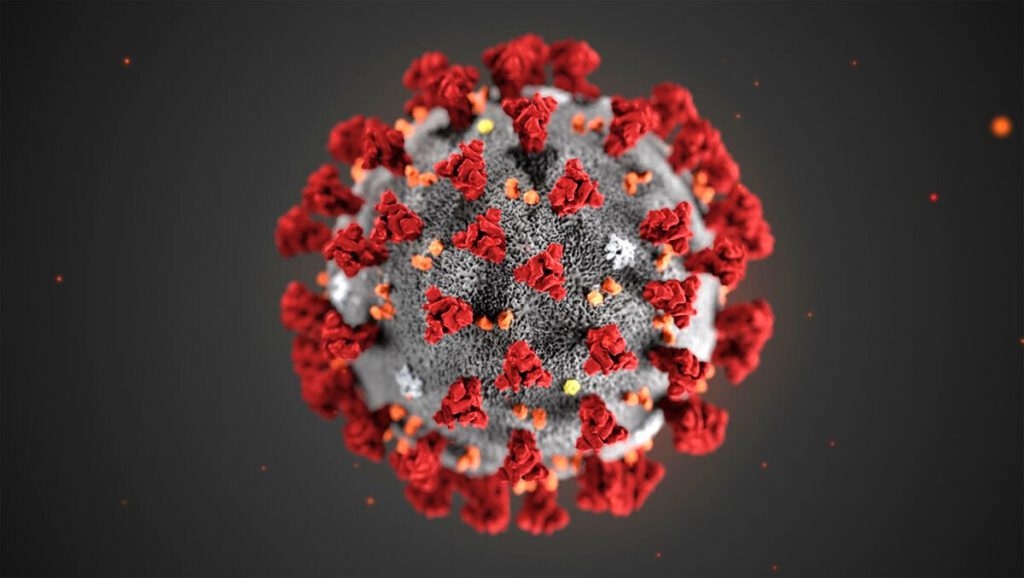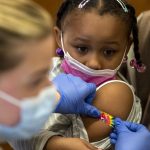Is COVID-19 Winning in Wisconsin?
The data is alarming. As are the many allies of the virus.
Recent data suggest that Wisconsin is losing its fight to control the spread of COVID-19 in the state. As the chart below shows, the daily per capita rate of new cases (shown in blue) declined for much of August when averaged over seven days. However, in September the rate has shown a sharp upward spike.
Wisconsin’s lower August new case count led Chicago to remove Wisconsin from its list of states whose residents require a two-week quarantine. The Chicago requirement is based on new caseloads over 15 per 100,000 residents (shown with a purple dashed line). With Wisconsin’s case spike, it is likely the quarantine requirement will be reimposed on travelers from Wisconsin.
For months this state has been subject to New York’s similar, but stricter, requirement of an average of 10 cases per 100,000 residents, shown as a yellow dashed line:
Currently around six or seven Wisconsinites die of COVID-19 every day. Even though the number of cases is substantially higher than that in April and May, deaths are slightly lower. There are several likely causes of this apparent decline in lethality, including:
- More widespread testing. Because of the shortage of tests in April and May, people with mild or no symptoms were likely to never be counted.
- Better treatment of patients with potentially lethal cases of COVID-19 as more is learned about what works.
- Self-isolating, particularly by people who are vulnerable to the virus, either because of their age or medical condition.
The next chart shows that there has been a substantial increase in testing in Wisconsin since last spring. However, recently the number of tests has declined, so that increased testing does not explain the most recent spike.
The next chart shows that the percentage of Wisconsin tests with positive results for COVID-19 has risen substantially recently, currently averaging around 14 percent. This is considered very high and a sign there are uncounted people who have the disease and are able to spread it.
How many other people are infected by the average person with COVID-19? If the answer is more than one, then the virus is spreading. If it is less than one, the virus will become less common and, theoretically at least, eventually disappear. This number is called Rt. The chart below one model’s estimate of Wisconsin’s Rt value over time. Recently, the estimated Rt has crept up so that it is the second largest among the states, after West Virginia’s. This outcome implies that Wisconsin is on track for a serious increase in COVID-19 cases if present trends continue.
Since late July, Milwaukee County’s daily new cases have been declining, from a high of thirty-some cases per 100,000 residents to a low of ten before jumping to fifteen in the past week. Thus, for the first time, Milwaukee is pulling down the state average, rather than pushing it up.
The point is not that COVID-19 is being superbly managed in Milwaukee County. Rather, the virus is aggressively spreading in much of the rest of Wisconsin. The graph below shows the counties with the largest per capita new cases per day. Geographically, they are widely scattered around the state, with something of a hot spot in the Fox Valley.
The New York Times recently published a national list of the cities with the fastest rising new case load. Three Wisconsin towns were among the top ten: Madison (in 5th place), Platteville (6th), and Whitewater (9th). Their counties are also listed in the graph above.
A common thread to all three cities is that they host campuses of the University of Wisconsin, whose student population is large compared to that of the rest of the city. This suggests that these campuses reopened without adequate planning.
Here are two reasons that the coronavirus is spreading in Wisconsin.
First is the belief in much of rural and small-town America that their low population density offers a kind of wall against the spread of COVID-19. They can point to the fact that the virus initially targeted large population centers, mostly in northeast states. Unlike residents of those areas, they seldom use public transportation, live in detached housing, and are less likely to deal with strangers.
Similarly, prior to Trump’s ceremony at Mt. Rushmore and the Sturgis motorcycle rally, South Dakota residents attributed their avoidance of a major outbreak to their low population density. Recently South Dakota has been at the top of the list of states based on their per capita rate of new cases, although North Dakota has moved ahead.
Similarly, there seems to be a belief in many of Wisconsin’s rural counties that measures to control the virus are done for the sake of Milwaukee and Madison, and for which they are expected to pay the price. In its challenge to Governor Tony Evers’ mask order, the Wisconsin Institute for Law and Liberty (WILL) exploits this perception, pointing out that its clients are residents of Polk County, a small county in the northwest of Wisconsin. Thus, it argues, they have no need for masks.
Currently Polk is seeing new daily cases at the rate of 8.8 per 100,000 residents. This is relatively low for Wisconsin but leaves Polk vulnerable to an explosion of cases if the right super spreader event comes along. The Wisconsin Department of Health rates Polk’s activity level as “high.”
By deciding that COVID-19 “cannot happen here,” residents of Wisconsin’s smaller counties help make their counties friendlier to the virus. In addition to complacency, COVID-19 benefits from the number of allies it has gained in Wisconsin. Here is a partial list:
- President Trump, who has continually undercut efforts to control COVID-19.
- The Republican majority on the Wisconsin Supreme Court, who are hostile to any efforts to control the virus.
- The Republican legislative leaders, Robin Vos and Scott Fitzgerald, who won the right for a say on steps to control the virus, but proceeded to do nothing.
- 79 other Republican legislators who either back or don’t dare oppose Vos and Fitzgerald.
- The Wisconsin Institute for Law and Liberty, which has used the legal system to help the virus rampage through the Wisconsin populace, sickening and killing them on the way.
- Most strikingly, the coronavirus has gained these allies—and the resulting ability to influence public policy so it spreads further—without ever offering a political campaign contribution.
More about the Coronavirus Pandemic
- Governors Tony Evers, JB Pritzker, Tim Walz, and Gretchen Whitmer Issue a Joint Statement Concerning Reports that Donald Trump Gave Russian Dictator Putin American COVID-19 Supplies - Gov. Tony Evers - Oct 11th, 2024
- MHD Release: Milwaukee Health Department Launches COVID-19 Wastewater Testing Dashboard - City of Milwaukee Health Department - Jan 23rd, 2024
- Milwaukee County Announces New Policies Related to COVID-19 Pandemic - David Crowley - May 9th, 2023
- DHS Details End of Emergency COVID-19 Response - Wisconsin Department of Health Services - Apr 26th, 2023
- Milwaukee Health Department Announces Upcoming Changes to COVID-19 Services - City of Milwaukee Health Department - Mar 17th, 2023
- Fitzgerald Applauds Passage of COVID-19 Origin Act - U.S. Rep. Scott Fitzgerald - Mar 10th, 2023
- DHS Expands Free COVID-19 Testing Program - Wisconsin Department of Health Services - Feb 10th, 2023
- MKE County: COVID-19 Hospitalizations Rising - Graham Kilmer - Jan 16th, 2023
- Not Enough Getting Bivalent Booster Shots, State Health Officials Warn - Gaby Vinick - Dec 26th, 2022
- Nearly All Wisconsinites Age 6 Months and Older Now Eligible for Updated COVID-19 Vaccine - Wisconsin Department of Health Services - Dec 15th, 2022
Read more about Coronavirus Pandemic here
Data Wonk
-
Life Expectancy in Wisconsin vs. Other States
 Dec 10th, 2025 by Bruce Thompson
Dec 10th, 2025 by Bruce Thompson
-
How Republicans Opened the Door To Redistricting
 Nov 26th, 2025 by Bruce Thompson
Nov 26th, 2025 by Bruce Thompson
-
The Connection Between Life Expectancy, Poverty and Partisanship
 Nov 21st, 2025 by Bruce Thompson
Nov 21st, 2025 by Bruce Thompson



























